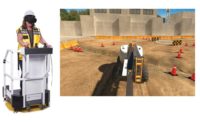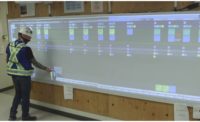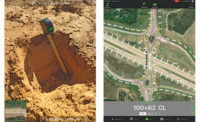Hoping to address a disturbing trend of increased deaths from falls on worksites, the American Society of Safety Professionals has introduced an app that lets a user wearing a headset walk on a virtual building roof and identify four common fall hazards.
During the immersive three- to five-minute experience, the user then chooses from four anchor points, three harnesses and three lanyards to create a fall-protection system. A "colleague" then uses the equipment, and the user can see whether the colleague survives the fall. Once done, each user's performance is assessed.
The ASSP VR Fall Protection Experience, created by Arch Virtual, was introduced at Safety 2018 in San Antonio, where more than 100 people tried it, says Thom Kramer, vice chair of the ANSI Z359 Accredited Standards Committee and fall-protection subject-matter expert for the app. They represented industries ranging from the military to logistics to manufacturing.
Requests for interviews with people who have used the app were rejected by Andeavor, a marketing, logistics and refining company; NASA; and the U.S. Air Force. Kramer says they have expressed interest to ASSP in buying the app or having it customized.
Kramer says feedback received during the conference included critiques such as questioning whether a skylight should be listed as a fall hazard. Participants asked for iterations in which the user can virtually assemble the connections, such as snaphooks, D-rings, leg straps and anchorage connections.
Data from 1995 through 2016 from the Bureau of Labor Statistics indicate that while the number of workplace fatalities has decreased overall, deaths from falls have increased by 30%. "They defy the trend," Kramer says. "We have more regulations, standards and equipment, but there are really big flaws in using the equipment."
For example, a construction worker working on a floating bridge in Seattle fell off; the lifeline of his harness hit a concrete edge and was severed. "There are 800 stories like that every year, and almost all were preventable," says Kramer.






Post a comment to this article
Report Abusive Comment